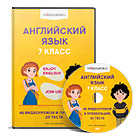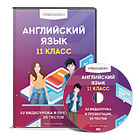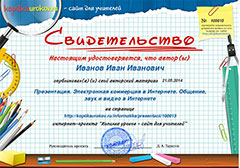| LESSON 8: Unit 4 The world around us Животные Animals
| School: |
| Date: | Teacher name: |
| Grade: 1 Б | Number present: 14 | absent: 1 |
| Learning objectives(s) that this lesson is contributing to | 1.S3 pronounce basic words and expressions intelligibly 1.L3 recognise short instructions for basic classroom routines spoken slowly and distinctly; recognise with support simple greetings recognise the spoken form of a limited range of basic and everyday classroom words 1.R1 recognise sound and name the letters of the alphabet |
| Lesson objectives | All learners will be able to: Most learners will be able to: recognise basic intonation distinguishing questions from statements understand the meaning and distinguish the sounds of new words. participate in short conversations on specific topics. Some learners will be able to: respond appropriately to some questions use some short form answers correctly |
| Success criteria | -name at least 4 out of 6 words correctly by the end of the lesson |
| Value links | Love the world around us |
| Cross curricular links | biology |
| ICT skills | Using videos, PPT |
| Previous learning | Vocabulary from previous three units: there is\There are structure and use of plural form Unit 3 |
| Plan |
| Planned timings | Planned activities (replace the notes below with your planned activities) | Resources |
| Beginning 3-5 minutes
| ORGANIZATION MOMENT
Hello, children! Let's sing a song!
Group 1: Hello! Hello! Hello! Hello! Hello! Hello! Hello! How are you?
Group 2: Hello! Hello! Hello! Hello! Hello! Hello! Hello! I am fine! Thank you!
Teacher asks sts to look round and observe the “Picture gallery” objects allocated on the wall. Students give their ideas to teacher. Sts predict what the topic of our lesson is.
Teacher: The topic of our lesson is “Animals”. Today we’ll call the animals in English, and talk with them. (firstly teacher shows the role play game then pupils).

| Song “Hello”
http://www.youtube. com/watch?v=G1Q7 iacuuaE
|
| Middle
6 minutes
8 min
1 min
5 min
5 min | SPEAKING DRILLS.
Teacher gets out animal dolls of the fairy tale"The Little House": Hello! My name is mouse. What’s your name?
How are you? How old are you? After that teacher asks pupils to come to the blackboard and play this role play game. Teacher may divide class into two or thee groups.
PLAYING Game «I SPY ANIMALS"
Pupils count animals in English and write the answers. They have fish, crocodile, bear, cat. 
LISTENING (work in pairs)
Point and color: Fox is red. Bear is brown. Mouse is blue. Wolf is black. Rabbit is pink. Pupils listen the teacher then starts to color the animals.
CREATIVE WORK
1) Watch the cartoon "The Little House".
2) Staging
Characters: mouse, rabbit, wolf, fox, frog, bear.
LISTENING 1) Except animals from the fairy tale, there are many different animals. Let's listen to a song about them.
2) Listen to the sounds and look at the pictures of animals.
3) Recognize animals only on their sounds.
WORKING WITH CARDS
1 )Show where the animals live. Glue the pictures of аnimals to their habitats. | Puppets
Worksheets of animals http://ejka.ru/blog/zagadki/1.html
http://deti-online.com/skazki/russkie-narodnye-skazki/teremok/
CD http://get-tune.net/?a=music&q= |
| 10 minutes
| FORMATIVE ASSESSMENT (Gaitov E., Alaev A., Ablashimov R., Iliyasova S., Gaporova M.)
| A collection of tasks for Formative Assessment |
| End 3-5 minutes | FEEDBACK Show your mood
fun like a monkey
sad like a wolf
bad as a lion THE LESSON IS OVER. GOOD BYE |
|
| Additional information |
| Differentiation – how do you plan to give more support? How do you plan to challenge the more able learners? | Assessment – how are you planning to check learners’ learning? | Cross-curricular links
Health and safety check
ICT links
Values links |
more support can be given during elicitation, instruction and questioning phases of the lesson by nominating learners to answer items relating to more high frequency vocabulary to build confidence through participation. more able learners will be challenged by prompting their groups to develop more elaborate types of animals to narrate. | through questioning and the redirecting of questioning in feedback activities through observation in group and end performance activities | performance arts: use gestures & movements to the animals ICT: playing computer games Science: habitats of animals Drama: staging Art: painting
|
| Reflection Were the lesson objectives/learning objectives realistic? What did the learners learn today? What was the learning atmosphere like? Did my planned differentiation work well? Did I stick to timings? What changes did I make from my plan and why?
| Use the space below to reflect on your lesson. Answer the most relevant questions from the box on the left about your lesson. Learning objectives on the lesson were solved by interactive teaching methods. Pupils have learned new words through the use of gaming techniques. The kids were able to use new words and phrases in their speech and create their own script of the tale. |
| Through the integration the pupils quickly learned the material, as it turned out it is familiar from the world around them. Children were involved into the lesson, as the activities in the classroom changed every 5-10 minutes. Differentiated approach to teaching was manifested in group work, where less speaking children repeated the word son the sample. These children were not emphasized, were not corrected and after many repetitions, and less able learners could say new words independently.
Time in the classroom was observed, although kids like to play a little longer, especially the games on the computer. Changes in the lesson plan were not made. |
| Summary evaluation What two things went really well (consider both teaching and learning)? 1: Playing technique of learning vocabulary.
2: Theatre technique. What two things would have improved the lesson (consider both teaching and learning)? 1: Integration with the subject of «Biology", where children learned wild life.
2: Integration with ICT. In computer games, which is close to them, they can play games in English What have I learned from this lesson about the class or individuals that will inform my next lesson? Kids like to play with dolls. I will use this technique in my future lessons to teach vocabulary and speaking. Class is movable. Every child needs attention. Particular attention should be paid to Ershat, because he is less sociable in the classroom and when he is involved into the group work, the group should give him the opportunity to speak. |

















